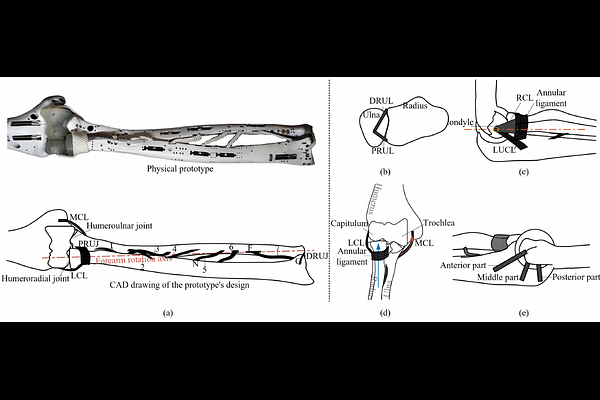Enhancing the Performance of a Biomimetic Robotic Elbow-and-Forearm System Through Bionics-Inspired Optimization

Enhancing the Performance of a Biomimetic Robotic Elbow-and-Forearm System Through Bionics-Inspired Optimization
Haosen Yang, Guowu Wei, Lei Ren
AbstractThis paper delineates the formulation and verification of an innovative robotic forearm and elbow design, mirroring the intricate biomechanics of human skeletal and ligament systems. Conventional robotic models often undervalue the substantial function of soft tissues, leading to a compromise between compactness, safety, stability, and range of motion. In contrast, this study proposes a holistic replication of biological joints, encompassing bones, cartilage, ligaments, and tendons, culminating in a biomimetic robot. The research underscores the compact and stable structure of the human forearm, attributable to a tri-bone framework and diverse soft tissues. The methodology involves exhaustive examinations of human anatomy, succeeded by a theoretical exploration of the contribution of soft tissues to the stability of the prototype. The evaluation results unveil remarkable parallels between the range of motion of the robotic joints and their human counterparts. The robotic elbow emulates 98.8% of the biological elbow's range of motion, with high torque capacities of 11.25 Nm (extension) and 24 Nm (flexion). Similarly, the robotic forearm achieves 58.6% of the human forearm's rotational range, generating substantial output torques of 14 Nm (pronation) and 7.8 Nm (supination). Moreover, the prototype exhibits significant load-bearing abilities, resisting a 5kg dumbbell load without substantial displacement. It demonstrates a payload capacity exceeding 4kg and rapid action capabilities, such as lifting a 2kg dumbbell at a speed of 0.74Hz and striking a ping-pong ball at an end-effector speed of 3.2 m/s. This research underscores that a detailed anatomical study can address existing robotic design obstacles, optimize performance and anthropomorphic resemblance, and reaffirm traditional anatomical principles.